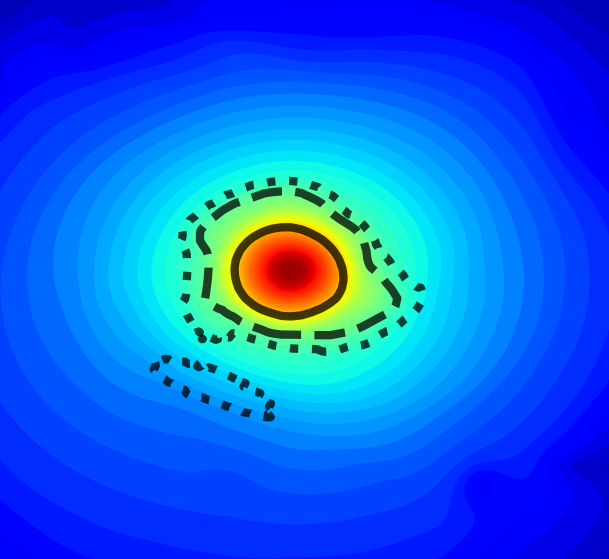In a recent paper researchers from the Relativistic Astrophysics group at Goethe University Frankfurt (Luciano Rezzolla, Samuel Tootle, Christian Ecker, Konrad Topolski) and the Asia Pacific Center for Theoretical Physics in Korea (Tuna Demircik, Matti Järvinen) study the formation of quark matter in neutron star binary mergers.

The image comes from the paper Dense and Hot QCD at Strong Coupling by Tuna Demircik, Christian Ecker and Matti Järvinen.
To describe the neutron star matter, they employ for the first time a recently developed unified model for nuclear and quark matter. This model combines traditional nuclear theory models for the relatively well understood matter below the nuclear saturation scale with a string theory inspired holographic model for QCD, called Veneziano QCD (V-QCD), to describe the theoretically challenging regime of dense baryonic and quark matter including the deconfinement phase transition.
Full 3+1 dimensional general relativistic hydrodynamic simulations of binary neutron star mergers with characteristics consistent with the observed GW170817 event allow them to identify three different stages in which quark matter is formed. They classify these three stages as “hot quark”, “warm quark” and “cold quark” stage, depending on the temperature and density of the deconfinement phase transition in the V-QCD phase diagram.
Their simulations provide predictions for the amount of quark matter produced, its influence on the emitted gravitational wave signal and the lifetime of the hypermassive neutron star that is formed after the merger.
To study the residual parametric freedom of V-QCD they study three variants of the unified equation of state (EoS) model with different stiffness, all of which are compatible with current mass and radius measurements of heavy pulsars.
The most significant signature of quark formation they find is an early phase-transition-triggered collapse (PTTC) of the softest model within approximately 10 milliseconds after merger.
This points to an inconsistency between the predictions of the soft V-QCD model and previously derived estimates of an approximately one second long lifetime of the hyper-massive neutron star formed in GW170817.
Looking forward, the group continues to work towards making the simulations more realistic by including effects of magnetic fields and radiation of neutrinos, which are known to have an important impact on the lifetime of the post-merger remnant.
With the ability to conduct long post-merger simulations, the group plans to study the remaining versions of the model that are consistent with the lifetime estimate of GW170817 in order to see which of them provides the most realistic description of dense nuclear and quark matter under the extreme conditions in neutron star merger events.

